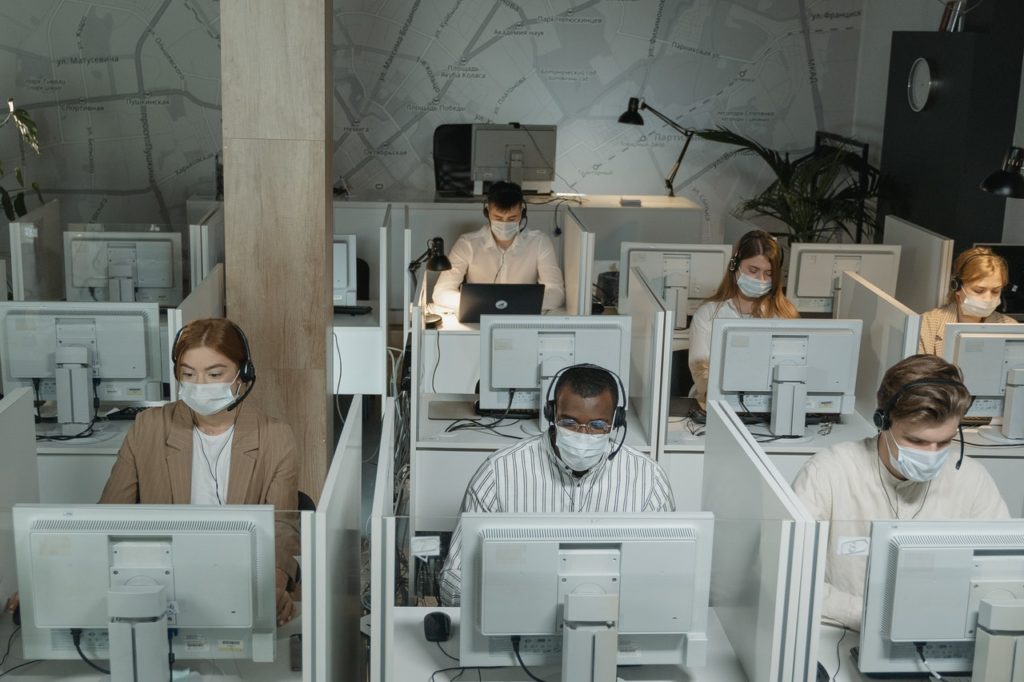The COVID-19 pandemic has been creating health and financial problems for small enterprises like yours for almost a year now. According to a study published in the Journal of Economics & Management Strategy, the number of active business owners in the US dropped by 22 percent during the fever pitch of the pandemic from February 2020 to April 2020. That’s over 3.3 million companies of various sizes and industries lost in a few months.
The Financial Impact of a Pandemic
Small businesses continue to struggle late into the year, even with government assistance. A report by Babson found that over 88 percent of SMB owners have already exhausted the money from their Paycheck Protection Program loan. It’s just tough to live the American dream right now.
If you’re looking to get your business back on its feet, you need to practice caution. Everyone’s familiar with the correct mask and face shield use, as well as proper handwashing practices. The “6 feet apart” social distancing measures are also a given.
Some people, however, may not be as familiar with dealing with the worst-case scenario: When their workers test positive for COVID-19. Slowing down and preventing the spread of the virus in the workplace is your responsibility as an employer. You’re expected to follow the best practices in doing so.
Here’s what you need to do when one or more of your employees tests positive for this virus.
Offer Proper Instructions for Your Workers
Once you receive information that your employee is positive for COVID-19, send them home immediately. They need to self-quarantine for at least two weeks from the day they got their diagnosis. If they’re showing symptoms like a fever and headache, instruct them to go to a hospital to ensure that they get treatment and further tests before their self-isolate.
If your employees are unsure what to do for their self-quarantine, instruct them to do the following:
- Minimize contact with others — Your worker should stay at home and limit physical contact with others as much as possible. The virus spreads through respiratory droplets. Your worker could infect their loved ones by simply talking in front of them.
If they have roommates and family members living with them, your employee should stay in one ventilated room away from everyone else. Visitors should be kept to an absolute minimum. If they need to interact with their housemates, they should keep a distance of at least six feet. - Use separate facilities — If possible, your employee should use a separate bathroom in their house if they’re living with other people. If they only have one bathroom, points of contact like doorknobs and taps should be cleaned with soap and water. The infected person should also have separate utensils, glasses, and dishes from their family members.
- Practice Frequent Hand Hygiene — Your employee also needs to practice regular hand washing, especially if they get items like packages and food from outside every day. Instruct them to wash their hands with soap and water for at least 20 seconds.

Do Proper Contact Tracing
It’s possible that your COVID-19-positive employee may have infected other people in the workplace without knowing it. As such, it’s important to listed own people who have been in close proximity to the worker a few days before they tested positive. Send the complete list of the people you reached out to your local public health department, so they can record the possible spread of the virus.
Everyone who’s been in close contact with the COVID-19-positive employee should also self-quarantine for at least two weeks. You can’t let them into the worksite. Have them work from home, if it’s doable. You should also get these employees tested before they come back to the office just to be sure.
React and Prevent
Apart from reacting properly to this difficult situation, you must make sure that it doesn’t happen again. After all, prevention is always better than cure.
Have your cleaning crew clean and disinfect all the surfaces that the COVID-19 worker frequently interacted with, like their work station, bathrooms, electronic equipment like touch screens and keyboards, and more. After all, the virus can live on hard surfaces for several hours to a few days.
Make sure to use EPA-approved disinfectants. If you don’t have the time or budget to order them, 70 percent isopropyl alcohol should work just as fine. You could also use bleach diluted in tap water. It’s best to use a minimum of 5 percent sodium hypochlorite bleach. Add about one and a quarter teaspoon of bleach per cup of water. Spray this mixture on hard surfaces and let it sit for about five minutes before rinsing it.
Several vaccines for COVID-19 have now received the green light from authorities, but you still need to ensure your employees are safe at work. The health and financial cost of infection can bring any business to its knees. Use these suggestions to guide you through a positive diagnosis within your workplace to keep the rest of your employees protected and healthy.







